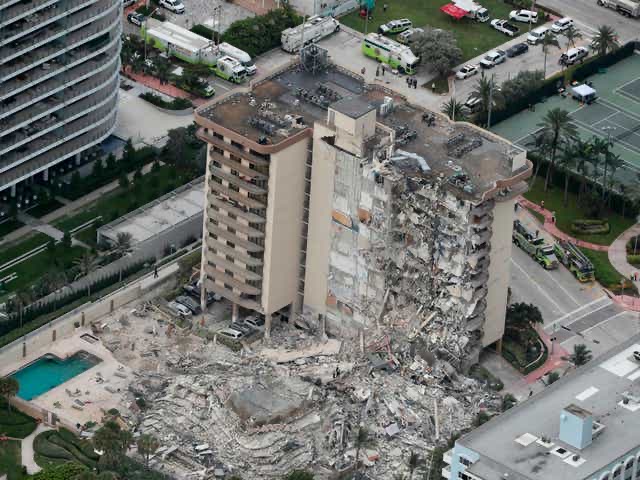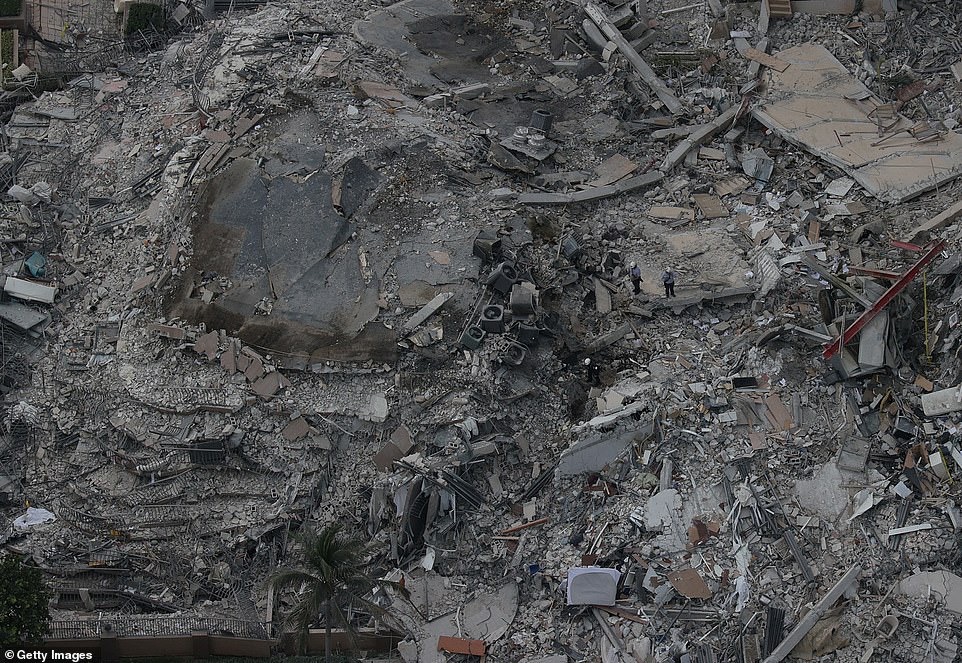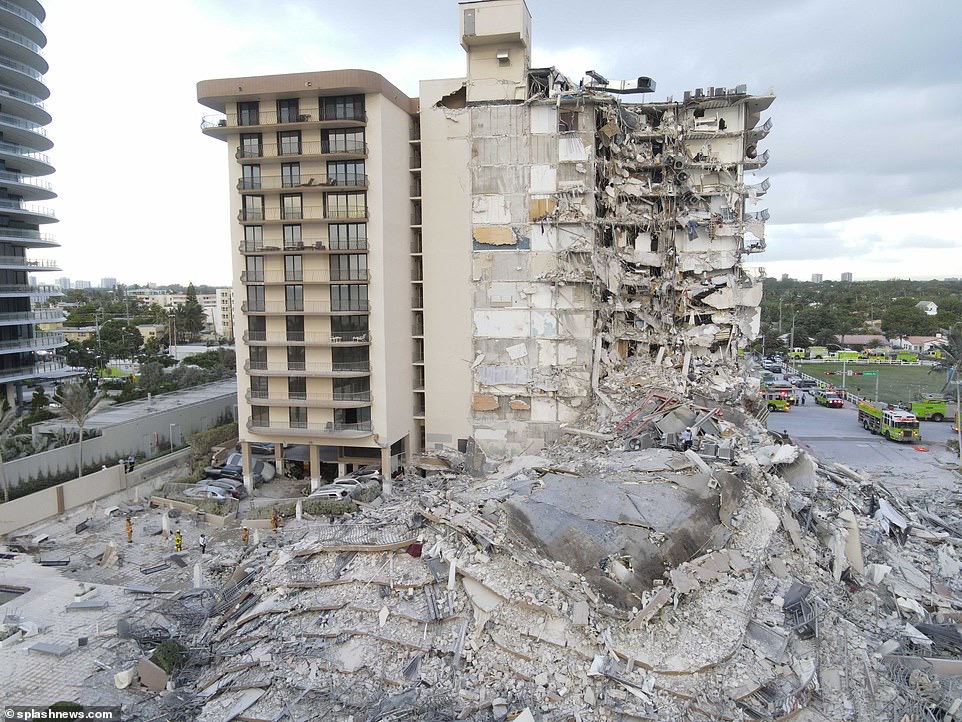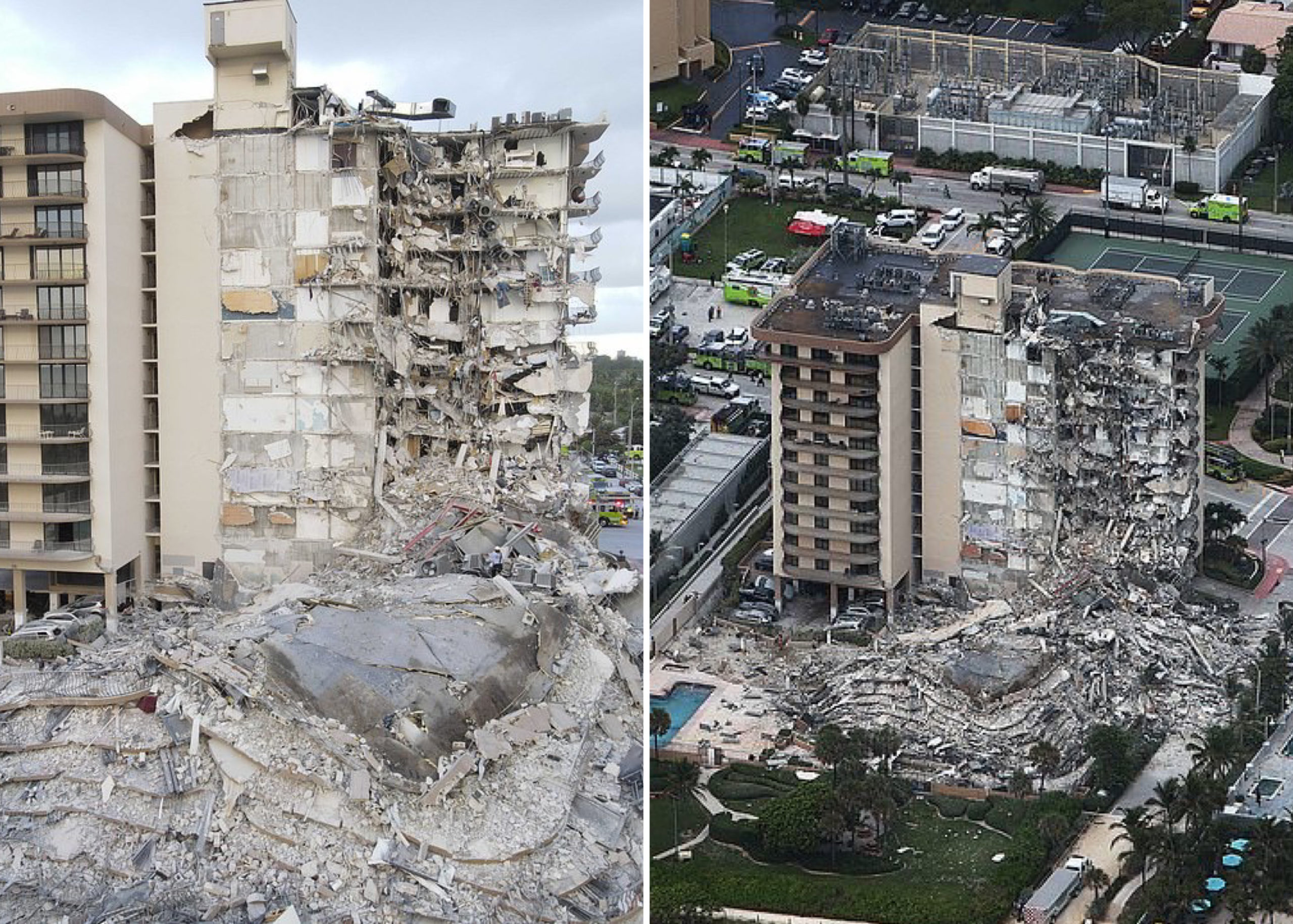 Scientists had warned a year ago that 12-story Miami condo building which collapsed on Thursday, killing at least four persons and leaving 159 missing, was sinking into Earth.
Scientists had warned a year ago that 12-story Miami condo building which collapsed on Thursday, killing at least four persons and leaving 159 missing, was sinking into Earth.
A 2020 study from Florida International University found the Champlain Towers South sea-view condo development was sinking at a rate of about 2 millimeters a year in the 1990s because it sits on reclaimed wetlands.
It would be recalled that the building in Surfside, Florida, partially collapsed around 1.30am on Thursday.
Read Also: Four Dead, 159 Still Missing In Miami Building Collapse, Officials Say (Photos/Video)
At least 37 people have so far been rescued from the rubble or parts of the damaged building still standing, with 11 injured and four hospitalised.
The oceanfront building was also due to have its safety recertified for the first time in 40 years this year which included the need for ‘extensive repairs for rusted steel and damaged concrete‘ on parts of the structure.
Authorities have not yet determined what caused the collapse and Miami-Dade police have opened an investigation – though Mayor Daniella Levine Cava said ‘there has been no evidence found of foul play.’
As questions mount over the cause of the tragedy and whether it could have been avoided, the hunt for survivors and victims in the rubble continued into a second day Friday.
A total of 55 condos collapsed on Thursday – more than a third of the 136 within the building – with most belonging to first-time homeowners.
The tower has a mix of seasonal and year-round residents, meaning authorities are unsure exactly how many people were inside when it collapsed. However, officials believe the building was ‘substantially full‘ at the time.
The building, which was constructed in 1981, has been sinking at an alarming rate since the 1990s, according to a study in 2020 by Shimon Wdowinski, a professor in the Department of Earth and Environment.
When Wdowinski saw the news that the Champlain Towers South condominium in Surfside collapsed, he instantly remembered it from the study, he said.
“I looked at it this morning and said, ‘Oh my god.’ We did detect that,” he said.
Wdowinski stated that his research is not meant to suggest certainty about what caused the collapse but expressed that the building was sinking at a rate of about 2 millimeters a year in the 1990s and could have slowed or accelerated in the time since, he said.
The paper was published in April 2020 in the academic journal Ocean and Coastal Management and was part of a wider look at how buildings in Miami were sinking generally with rising sea levels caused by climate change.
The paper ominously warned;
In some locations, as in the eastern part of the city, the detected subsidence [sinking] is of a 12-story high condominium building.
It’s not immediately clear if the 12-story building referenced in the paper is the condo that collapsed. It’s also not clear if any officials took note of the paper when it comes to shoring up any dangerous conditions in the area.
In a video, Wdowinski said hundreds of buildings can be sinking bit-by-bit – and hundreds of buildings can have cracks, not just in Miami.
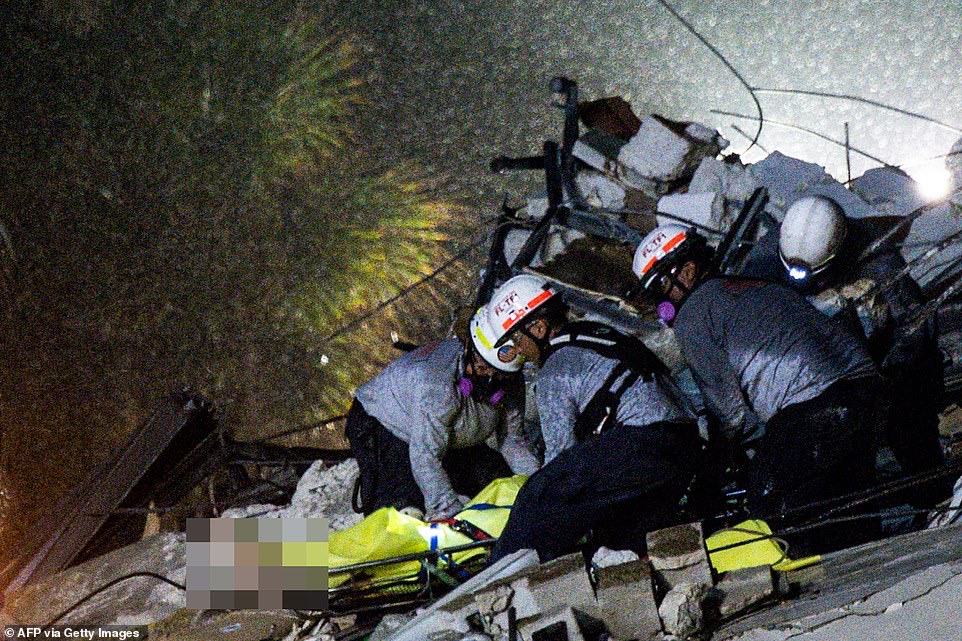 In his experience, even the level of sinking observed in the 1990s typically results in impacts to buildings and their structures, Wdowinski noted. He said that very well could have been the case for the Champlain building in the 1990s, based on his findings.
In his experience, even the level of sinking observed in the 1990s typically results in impacts to buildings and their structures, Wdowinski noted. He said that very well could have been the case for the Champlain building in the 1990s, based on his findings.
Meanwhile, Daniel Dietch, who served as Surfside’s mayor from 2010 to 2020, warned against drawing conclusions too soon.
He said;
This is an extraordinarily unusual event, and it is dangerous and counterproductive to speculate on its cause.
Meanwhile, rescue operations are still ongoing and President Joe Biden approved an emergency declaration in Florida that authorises Department of Homeland Security, Federal Emergency Management Agency (FEMA), to coordinate all disaster relief efforts at the site.


